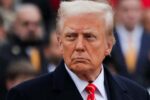HONG KONG: In the past few years, the fate of Taiwan has become a hot topic as the Chinese People’s Liberation Army (PLA) threatens it with ongoing aircraft flybys and naval circumnavigation.
Voices are approaching a concerned crescendo, with Admiral Philip Davidson, head of the US Indo-Pacific Command, warning the US Congress that a Chinese attack could occur by 2027 or sooner.
“I worry that they’re accelerating their ambitions to supplant the United States and our leadership role in the rules-based international order…by 2050. Taiwan is clearly one of their ambitions before that, and I think the threat is manifest during this decade, in fact, in the next six years,” Admiral Davidson said, adding, “We are accumulating risk that may embolden China to unilaterally change the status quo before our forces may be able to deliver an effective response. I cannot for the life of me understand some of the capabilities that they’re putting in the field, unless…it is an aggressive posture.”
Further, US Defense Secretary Lloyd Austin said on 4 December of Chinese military flights near Taiwan: “I don’t want to speculate, but certainly…it looks a lot like rehearsals.”
Fuller detail was found in the recent 2021 copy of the China Military Power Report issued by the Pentagon. It stated, “The PLA continues to prepare for contingencies in the Taiwan Strait to deter and, if necessary, compel Taiwan to abandon moves toward independence. The PLA also is likely preparing for a contingency to unify Taiwan with the PRC [People’s Republic of China] by force, while simultaneously deterring, delaying or denying any third-party intervention, such as the United States and/or other like-minded partners, on Taiwan’s behalf.” It continued, “As part of a comprehensive campaign to pressure Taiwan and the Tsai administration, and signal its displeasure at warming Washington-Taipei ties, China has persistently conducted military operations near Taiwan and military training for a Taiwan contingency. Throughout 2020, China’s military increased provocative actions in and around the Taiwan Strait, to include repeated flights into Taiwan’s air defense identification zone and conducting combat drills such as island seizure operations. In 2020, Beijing also publicly refuted the existence of the Taiwan Strait ‘median line,’ a decades-long tacit agreement between the two sides intended to reduce miscalculation and avoid sparking accidental crises.”
NATO is currently concerned about Russian troops concentrating on the border with Ukraine. However, those concentrations fade away when compared to the military buildup that the PLA has achieved in close proximity to Taiwan, particularly its Eastern Theater Command.
Dennis Blasko, a prominent ex-US Army expert on the PLA, explained to ANI why Xi is prioritizing the PLA.
“It’s, number one, to defend China from attack. Number two, to deter Taiwan from further steps toward independence, and to deter the United States from supporting Taiwan in further steps toward independence. Deterrence is thus the linchpin of China’s strategy.”
“In order to deter, you have to have a credible force. And they are building that credible force. Again, by the theory of deterrence, you have to display the determination to use that force. And you do that through statements, you do that through exercises.”
Often, commentators envisage a D-Day-style amphibious landing of Taiwan presaged by missile barrages and aerial attack. However, such an attempt to reunify democratic Taiwan with the communist Mainland would be militarily and politically the riskiest move for Chairman Xi Jinping.
Is such a military invasion likely?
Blasko told ANI: “I don’t think so. I don’t think they’ve got the confidence level that they could do that yet, and they certainly don’t have the sealift to do it … I think I’d be probably one of the few people to argue this, but I don’t think they want to go to war. No, at this point I think they’d consider having to go to war as a failure of their national strategy. They would much rather get everything they want through negotiations or other forms of pressure.”
Even though the PLA Navy (PLAN) has large vessels like Type 071 landing platform docks and Type 075 landing helicopter docks, quantities of shorter-range amphibious vessels like landing ships for an over-the-beach invasion has largely stayed static.
Blasko estimated that the PLAN could land perhaps only 10,000 troops on the first day of an invasion. Furthermore, PLA amphibious exercises are rarely larger than company-level training. An exception this year has been half a dozen battalion-level exercises using commercial roll- on/roll-off ferries. While Ro-Ros could greatly increase troop/equipment lift capacity, these would mostly require unloading at ports that would first need to be secured.
The PLAN’s limitations in amphibious capacity led Blasko to highlight the role that army aviation and Special Forces could play in any hypothetical invasion of Taiwan. The PLA has 15 army aviation brigades with perhaps 1,000-1,500 helicopters. By moving 4-5 aviation brigades into the area across from Taiwan, maybe 700-800 helicopters could be mustered for an assault. In one or two days, these could land 10,000 troops behind the coast to attack airports and ports.
Furthermore, the PLA Air Force’s (PLAAF) Airborne Corps of approximately 30,000 troops could participate in a Taiwan invasion.
However, the PLAAF still needs more transport aircraft like the Y-20 for such a major airdrop. Notwithstanding, a significant amount of air assault, special operations and airborne troops could wreak havoc for Taiwanese defenders.
Blasko concluded that the above kind of scenario should be more prominent in people’s minds, despite his insistence that any military invasion on Taiwan is improbable any time soon.
“I’m thinking that the whole across-the-beach invasion is what people are focused on, when China now has the capability to come in behind.” Taiwan’s terrain is unfavorable for heavy armor, so light, mobile units make better sense in any invasion scenario. For any amphibious or air assault of Taiwan, there would be obvious movements and concentrations of troops, vessels and aircraft to give warning time,”Blasko added, though: “On the other hand, if they wanted to do a bolt from the blue, they’ve got rocket forces that could fire from their garrisons or areas very close by. They could attack Taiwan with rocket fire, missile fire and air attack if they just wanted to punish … But the big invasion, whether it be by air or sea, that’s going to take the movement of a lot of folks over a lot of time.”
The Pentagon agrees that an amphibious invasion is China’s least likely approach. Its annual report said, “An attempt to invade Taiwan would likely strain the PRC’s armed forces and invite international intervention.”
Nonetheless, it could launch a limited amphibious operation to capture Taiwan-owned islands in the South China Sea or Taiwan Strait. It lists other possible strategies like an air and maritime blockade of Taiwan to force capitulation, an air and missile campaign, or limited force or coercive options (including information operations).
Perhaps the most likely is the “grey zone” tactics China has employed in the South China Sea and along the mountainous border with India. The country can use military, paramilitary, law enforcement or ostensibly civilians (for example, the People’s Armed Forces Maritime Militia is deliberately ambiguous, looking like fishermen but employed by the government for national strategic purposes) to achieve its aims. Midyear, the US-based Center for Security Policy published a report entitled “Taiwan as Donbas? Subversion and Insurrection vs. Full-Scale Invasion”.
Written by Grant Newsham, a retired US Marine Corps officer, Newsham contended that China could attempt a similar strategy in Taiwan to the one Russian President Vladimir Putin used in 2014 when seizing the eastern Donbas region of Ukraine. Putin denied any involvement in Donbas, claiming local militias and citizens were throwing off the yoke of Ukrainian oppression. However, these “little green men”, mysterious combatants that gave Putin (im)plausible deniability, were using Russian heavy weapons and armored vehicles.
Beijing has a decades-long history of subversion against Taiwan, employing academic, political, media, business, religious, community and “united front” organizations to curry pro-China sentiment, as well as old-fashioned espionage. It is presumed that China has a substantial “Fifth Column” presence in Taiwan, with groups able to spring into action to support a PLA assault.
According to Newsham, they could conduct assassinations, attack key targets and seize ports and airfields. For years, Beijing has been softening up Taiwan through public opinion warfare, psychological warfare and legal warfare. Many Taiwanese were already convinced their future lay with China. This was underscored by irrevocable economic ties, as many Taiwanese factories and businesses set up shop in China.
At the height of such sentiments, President Ma Ying-jeou’s administration from 2008-16 brought the two countries closer together than ever before. Indeed, the scene was being set for a “Chinese Donbas”. However, the election of Tsai Ing-wen and her Democratic Progressive Party in 2016 dramatically altered the balance. Xi grew impatient with the slow game of courting Taiwan, and his heavy-handed treatment of Hong Kong, as well as his ham-fisted approach to Taiwan, awakened many to the dangers of forcible reunification with China. ‘
Xi’s continued aggression has caused alarm not only in Taiwan, but all around the world. The Pentagon warned of rising tensions vis-a-vis Taiwan in this year’s report about China’s military.
“Based on changing public sentiment in Taiwan, according to recent polling data, PRC leaders may perceive a closing window of opportunity to subjugate Taiwan under the pretenses of Beijing’s ‘one country, two systems’ framework.
The PRC has increasingly resorted to an aggressive pressure campaign against Taiwan and the Tsai administration to curtail Washington-Taipei ties and deter ‘Taiwan independence.” The normally cautious report also stated: “The PRC conducting persistent military operations near Taiwan – and training for a Taiwan contingency – likely signals a greater urgency for the PLA to continue to develop and perfect its strategy and capabilities should PRC leaders look to a military option to achieve their objectives.”
China could creatively find an excuse to seize a Taiwanese offshore island or two near the Chinese coast, such as Kinmen or Matsu.
Due to their isolation, these islands are extremely difficult to defend, and Beijing might foment a provocation, perhaps saying it was heeding local residents’ invitation to intervene, or blowing up a few Chinese fishing boats and pointing the finger at Taiwan.
As an alternative to amphibious invasion and all-out war, Newsham remarked: “Politics and public sentiment are fickle things. One expects ongoing and possibly intensifying PRC efforts to ‘soften up’ Taiwan by creating economic turmoil and psychological intimidation. The goal: to create a public sense of hopelessness and fear that Taiwan has no outside support and to weaken Taiwan’s military and the public’s will to resist. Already as part of this effort, Chinese military aircraft and naval forces are gradually expanding their presence around Taiwan. One expects they will keep squeezing, and eventually maritime militia and regular fishing fleets will also ‘swarm’ Taiwan. In some respects this would be a ‘Donbas at sea’.” A pro-China government, one that could acquiesce in the face of such Chinese actions, might be Taiwan’s greatest existential threat then.
Taiwan could very well have faced such a situation after the 2020 elections if Han Kuo-yu, a pro-China acolyte who benefitted greatly from Chinese information operations, had become president.
The USA particularly must wholeheartedly endorse military support for Taipei, otherwise Xi will see a green light to go after it. Taiwan needs such fortitude, for it cannot stand alone against the might of the PLA.
Newsham warned: “A thoroughly distracted, disinterested, frightened USA – and with a weakened military – would change the dynamic considerably. The PRC would be more willing to coerce Taiwan, ruin its economy, terrorize and demoralize the public, while beefing up its Fifth Column and sympathizers and using them to cause trouble … But if the Americans decide they can’t be bothered with Taiwan, or it’s just too hard, the Japanese and others will likely follow suit, and then a Formosa Donbas becomes possible.” (ANI)









Comment